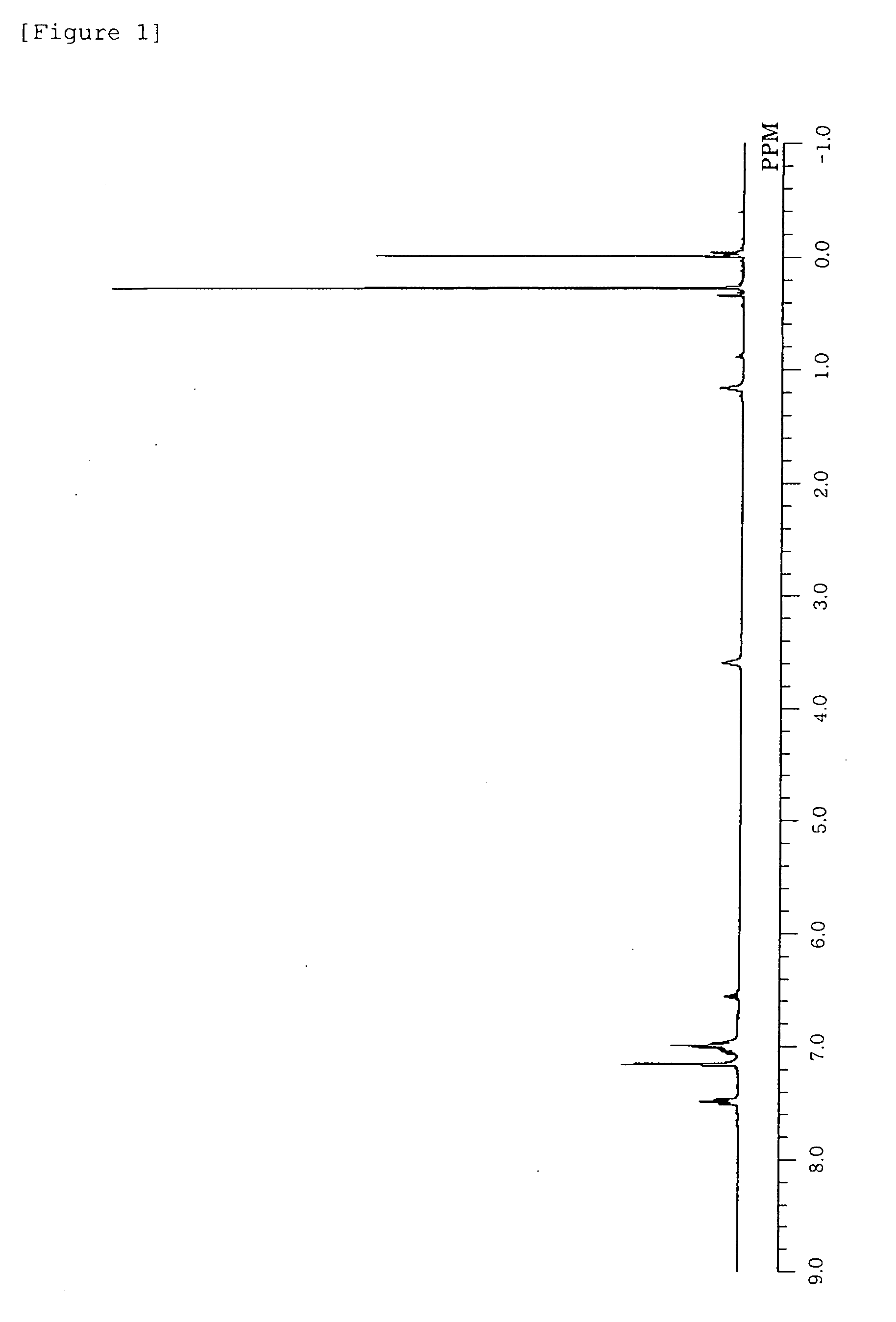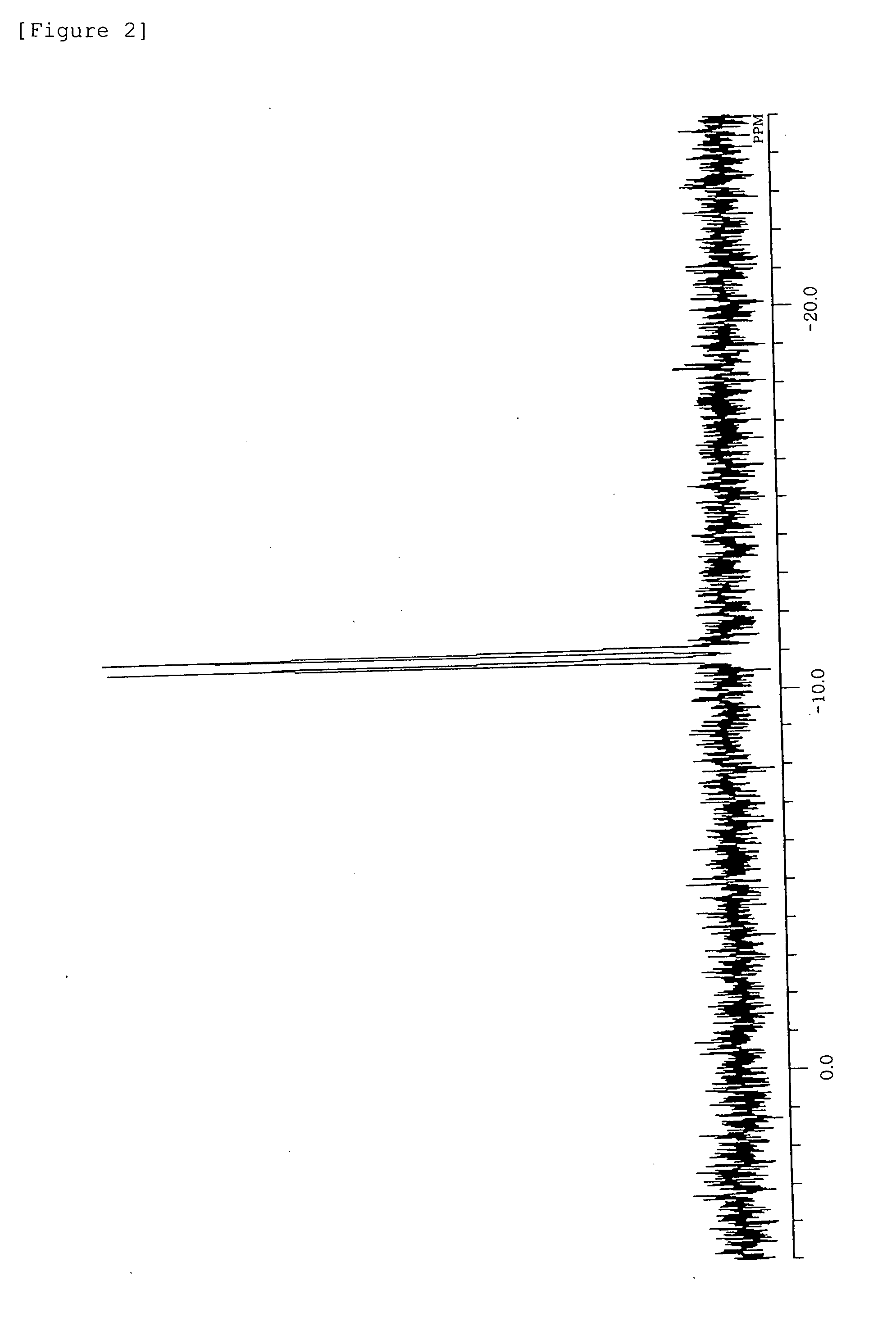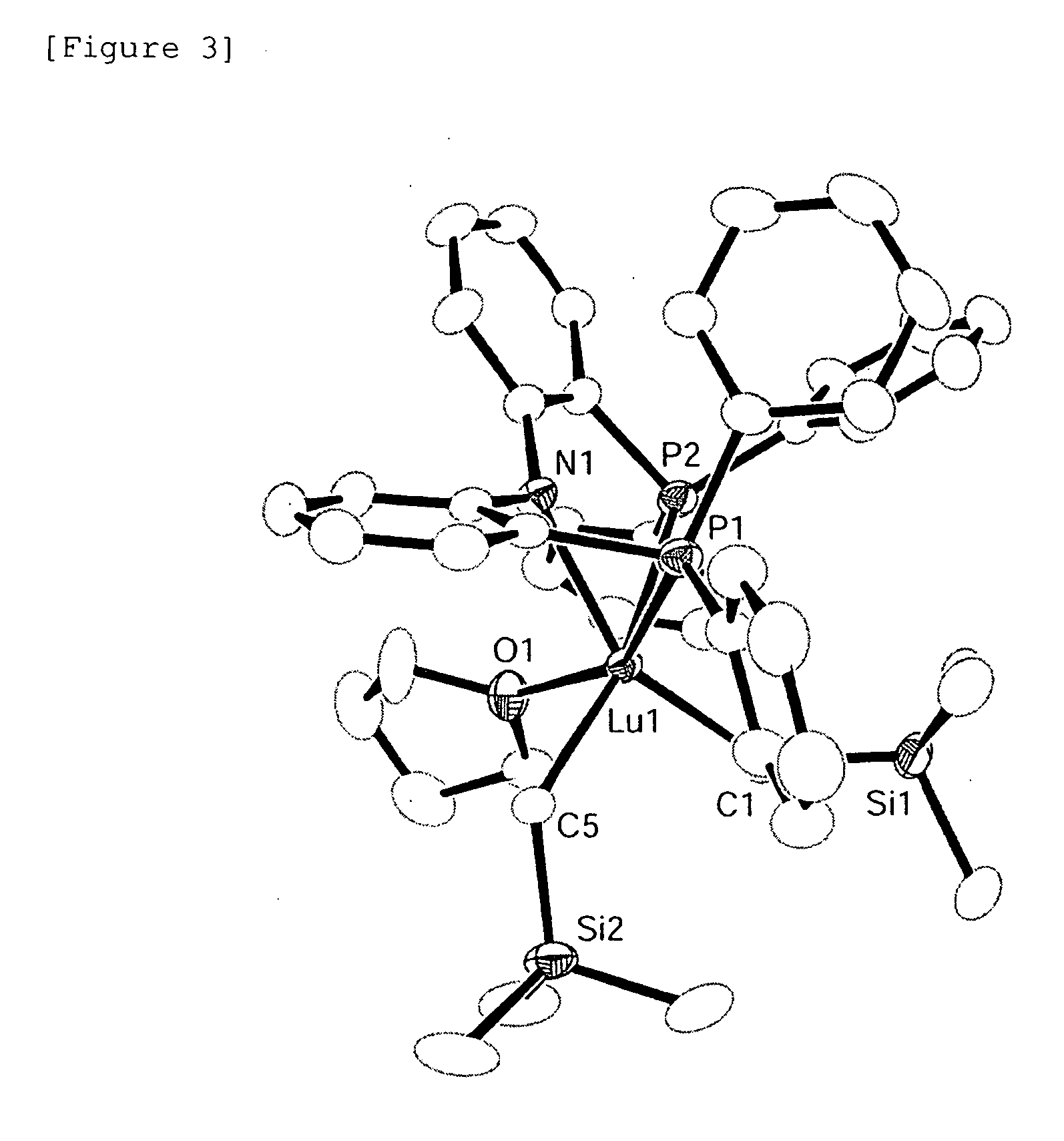Metal Complex Containing Tridentate Ligand, and Polymerization Catalyst Comprising the Same
a tridentate ligand and metal complex technology, applied in chemical/physical processes, group 3/13 element organic compounds, group 5/15 element organic compounds, etc., can solve the problems of unreported reactivity of metal complexes and unknown usages of metal complexes
- Summary
- Abstract
- Description
- Claims
- Application Information
AI Technical Summary
Benefits of technology
Problems solved by technology
Method used
Image
Examples
example 1
Synthesis of Complex
[0184]Under nitrogen atmosphere, YCl3 (1.96 g, 10.0 mmol) was suspended in THF (20 ml) and then add by dripping down with Li(CH2SiMe3) (2.86 g, 30 mmol) in THF solution (20 ml) for 1 hour at room temperature. After dripping down, THF was removed from the resulting solution under reduced pressure. Hexane was added to the residue and an insoluble material was then removed by filtration. The filtrate was concentrated and the concentrated product was then cooled to −20° C. After a separated oily product in the bottom of a vessel was removed, a low boiling point material was completely removed under reduced pressure, thereby obtaining a tris (trimethylsilylmethyl) yttrium complex [Y(CH2SiMe3)3(thf)2]
[0185]Bis (2-diphenylphosphinophenyl)amine (88 mg, 0.20 mmol) in THF solution (1.0 ml) was added by dripping down to the above obtained complex [Y(CH2SiMe3)3(thf)2] (100 mg, 0.20 mmol) in THF solution (5.0 ml) at room temperature. After dripping down, the color of the solu...
example 2
Synthesis of Complex
[0188][Sc(CH2SiMe3)3 (thf)2] was obtained by the same way as that of Example 1 except that ScCl3 was used instead of YCl3. Furthermore, [Sc(CH2SiMe3)2(PNP)] was isolated (THF molecule was uncoordinated on the resulting Sc complex).
[0189]1H-NMR (C6D6, δ / ppm): 7.60 (m, 8H, aromatic), 7.1-6.9 (m, 18H, aromatic), 6.55 (t, 2H, aromatic), 0.12 (s, 18H, 6Me), −0.16 (s, 4H, 2CH2)
[0190]31P-NMR (C6D6, δ / ppm): −8.3 (s)
example 3
Synthesis of Complex
[0191][Lu(CH2SiMe3)3(thf)2] was obtained by the same way as that of Example 1 except that LuCl3 was used instead of YCl3. Furthermore, [Lu(CH2SiMe3)3(thf)2] was obtained and [Lu(CH2SiMe3)2(PNP) (thf)] was isolated.
[0192]1H-NMR (C6D6, δ / ppm): 7.54 (m, 8H, aromatic), 7.1-6.9 (m, 18H, aromatic), 6.54 (t, 2H, aromatic), 3.62 (br, 4H, THF), 1.21 (br, 4H, THF), 0.22 (s, 18H, 6Me), −0.12 (s, 4H, 2CH2)
[0193]31P-NMR (C6D6, δ / ppm): 0.5 (s)
[0194]The complex [Lu (CH2SiMe3)2(PNP) (thf)] was recrystallized from toluene to obtain an yellow single-crystal and the structure thereof was then determined by X-ray crystal structure analysis. The measurement was carried out at −100° C. and obtaining with a direct method, followed by refining with respect to the square of the structural factor F (F2). R and wR2 factors that indicate the degree of correspondence between the structural model and the actual crystal structure are 0.0285 and 0.0709, respectively. The GOF value, which indica...
PUM
| Property | Measurement | Unit |
|---|---|---|
| Fraction | aaaaa | aaaaa |
| Fraction | aaaaa | aaaaa |
| Temperature | aaaaa | aaaaa |
Abstract
Description
Claims
Application Information
 Login to View More
Login to View More - R&D
- Intellectual Property
- Life Sciences
- Materials
- Tech Scout
- Unparalleled Data Quality
- Higher Quality Content
- 60% Fewer Hallucinations
Browse by: Latest US Patents, China's latest patents, Technical Efficacy Thesaurus, Application Domain, Technology Topic, Popular Technical Reports.
© 2025 PatSnap. All rights reserved.Legal|Privacy policy|Modern Slavery Act Transparency Statement|Sitemap|About US| Contact US: help@patsnap.com



